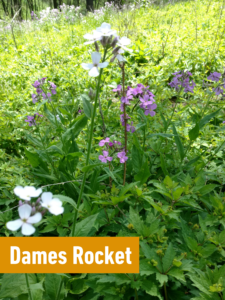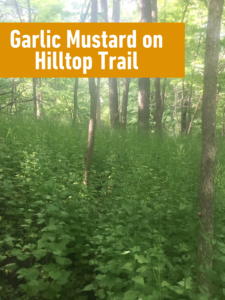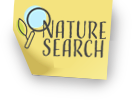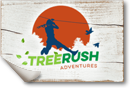National Invasive Species Awareness Week – Part 2
by Michelle Foss, Director of Resource Stewardship
This week is Part 2 of National Invasive Species Awareness Week: Outreach and Education (May 15 – 22, 2021), so we want to share some information about invasive plants, how they can be harmful to our local ecosystems, and what you can do to help.
Much of our habitat restoration is invasive species treatments – control, removal, eradication, reduction, mitigation and prevention. We employ a variety of management techniques and treatments in our work, including targeted herbicide application, mechanical removal, canopy opening and prescribed fire. As explained in our February post, invasive species are those which cause harm to the system through introduction or overpopulation.
Creating a healthier, invasive-resistant system
 We live in a unique area, containing several rare and disappearing habitats tucked around an urban setting. From the riparian systems in our floodplain, to rivers, marshes, streams, seasonal pools and wet meadows, forest woodlands and prairies, we deal with invading species in all of these areas. Our focus is on the plants – if you create a healthier base of the system, the rest of the living things will follow suit. A healthier system is more resistant to invaders of all types, and can more successfully regulate itself. Unfortunately, we aren’t there yet.
We live in a unique area, containing several rare and disappearing habitats tucked around an urban setting. From the riparian systems in our floodplain, to rivers, marshes, streams, seasonal pools and wet meadows, forest woodlands and prairies, we deal with invading species in all of these areas. Our focus is on the plants – if you create a healthier base of the system, the rest of the living things will follow suit. A healthier system is more resistant to invaders of all types, and can more successfully regulate itself. Unfortunately, we aren’t there yet.
We have areas completely shaded out by shrubs such as amur honeysuckle (Lonicera mackii) and autumn olive (Elaeagnus umbellata), which are essentially dead zones that not even robins use. These escaped landscaping shrubs not only shade out the ground, but also lack the necessary nutrition for birds that fill up on the bright berries, only to lack the sustenance for migration. As well, the honeysuckle leafs out early and stays green later, out-competing the native plants for sunlight and other resources. Without natural controls, these invaders take over, lowering the benefits to wildlife, and decreasing diversity.
Identifying invasives
Our restoration team of biologists, rangers and volunteers learn to identify the invaders, and the beneficial plants, and work to treat them year-round. We keep an eye out for new ones as well, and try to eradicate them before they take hold, when they are easier to deal with. We work with other natural areas on watch lists, and what we can expect to find invading soon, as well as technical support in what is working, and what isn’t. We practice adaptive management – sometimes treatments are no longer effective – and every once in a while we find our larger restoration actually helps to reduce some invasive plants.

 For example, six years ago, when I became a restoration biologist, we had garlic mustard (Alliaria petiolata) seemingly EVERYWHERE which, like the shrubs mentioned, out-competes native plants and forms dense monocultures that block native plants. In some of our thinning areas and fire units, we have noticed declining garlic mustard populations even after we stopped pulling it. Others, such as dame’s rocket (Hesperis matronalis), thrive in both full sun and shady areas, so we have to hand pull or mow in the flower stage before they produce seed. Many invasive plants are prolific seed producers, which gives them an edge over our native plants.
For example, six years ago, when I became a restoration biologist, we had garlic mustard (Alliaria petiolata) seemingly EVERYWHERE which, like the shrubs mentioned, out-competes native plants and forms dense monocultures that block native plants. In some of our thinning areas and fire units, we have noticed declining garlic mustard populations even after we stopped pulling it. Others, such as dame’s rocket (Hesperis matronalis), thrive in both full sun and shady areas, so we have to hand pull or mow in the flower stage before they produce seed. Many invasive plants are prolific seed producers, which gives them an edge over our native plants.
Invasive adaptations
One of our biggest headaches (for homeowners as well), is tree of heaven (Ailanthus altissima). This aggressively growing and fast-reproducing tree displaces native plants, damages concrete and building foundations, and can smell quite unpleasant. It produces significant seed amounts, as well as root suckers. Its best defense creates issues for our treatments. As soon as the tree senses it’s been damaged, it sends root suckers out. So, while that particular stem dies, several more are produced! For this reason, cutting it down is not helpful and actually harmful to treatment objectives. Additionally, when the tree dies the wood is very brittle, causing breakage along the trunk and branches. Land managers have developed a technique called basal bark spray, where the outside of the thin bark is painted with targeted herbicide. This kills the tree without triggering the root sucker response.
The floodplain includes a whole new set of invasives, though some are found in both the uplands and floodplain. Reed canary grass (Phalaris arundinacea) is taking over some spots and Japanese hopvine (Humulus japonicas) is covering trees and shrubs, shading out the ground. As well, there are other invasive grasses and flowers brought in along well-traveled paths and transferred by flooding.
The good news!
That was a whole lot of information about invasives and how they can harm our local ecosystems if not kept in check. But there is good news…EVERYONE can help manage for invasive plants!
Opting for native plants is the best way to help, but at the minimum, please avoid planting invasives. Because invasives are not stationary, they could travel, causing issues in other areas. Yes, invasive plants are still sold in nurseries, because invasives are more than just the regulated noxious weeds. A few examples are Dame’s rocket, which is often part of “wildflower” mixes. You can also purchase honeysuckle shrubs and some ornamental garden plants, like barberry (Berberis thunbergii), which are also invasive and promoted primarily by gardening.
How can you be sure you’re only purchasing native plants? Shop our native plant sale in June!
Our Native Plant Sale, in partnership with the Nebraska Statewide Arboretum, is back this year!
During the event, we will have staff present to answer questions and provide information regarding native plants, including how to deal with invasives.
Are you interested in learning more or volunteering?
Are you interested in learning more about the varied systems within Fontenelle Forest? Are you interested in volunteering with our land management team to keep the Forest healthy and beautiful?
Sign up for our land steward volunteer list here: http://eepurl.com/gdRiBr. We hold monthly workdays. The information is sent out about ten days in advance.
If you don’t have a garden, or landscaping, and can’t get out to a workday, you can still help! Share this information, explain about invasive plants to friends and family, and encourage people to look into what are invasive plants in their area. It will result in more resilient, native, habitat-producing landscapes which can save time on upkeep, mowing and watering. So, first remove the invasive plants, and then replace them with native, or at least non-invasive plants.


